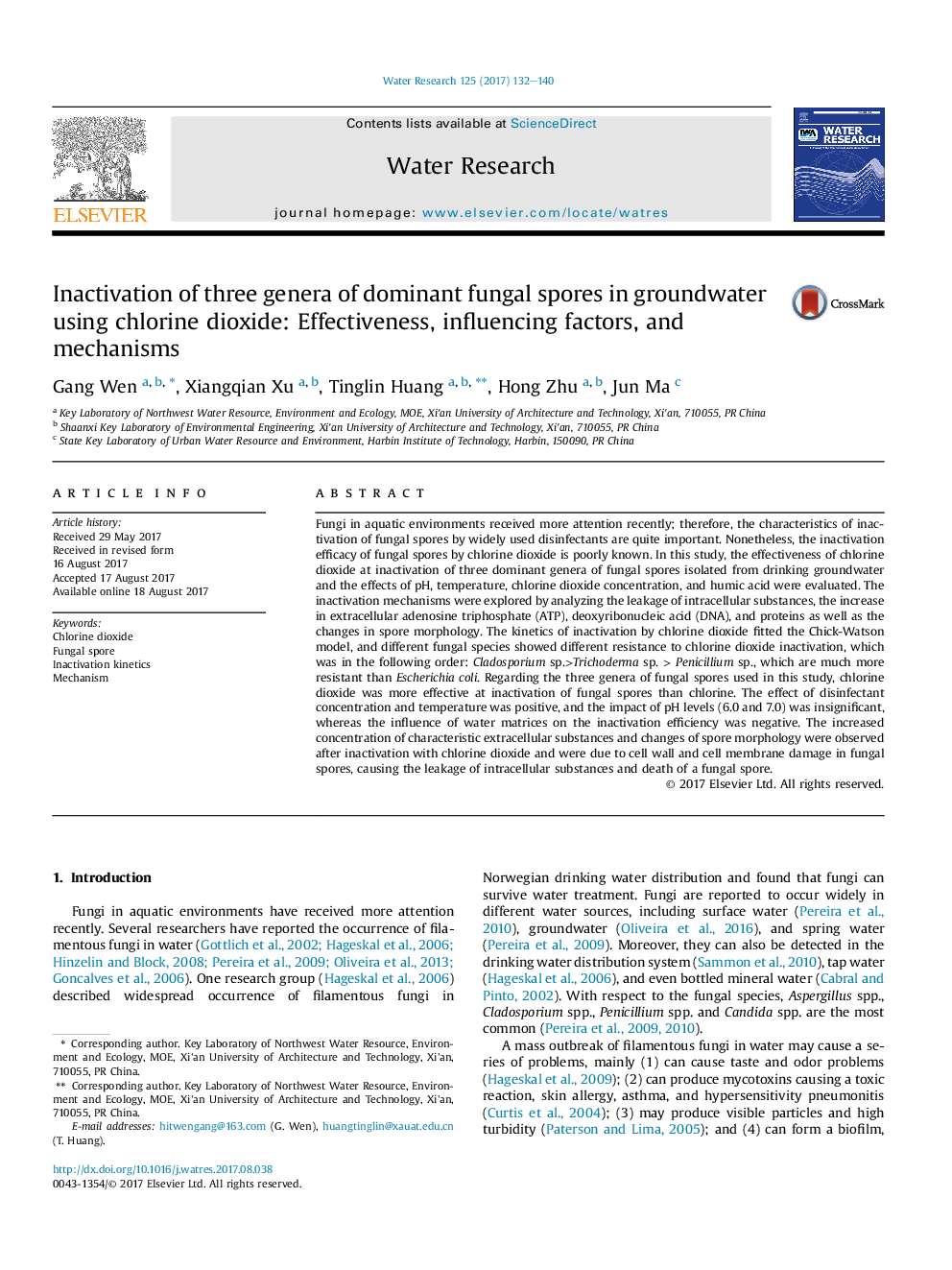| کد مقاله | کد نشریه | سال انتشار | مقاله انگلیسی | نسخه تمام متن |
|---|---|---|---|---|
| 5758784 | 1623043 | 2017 | 9 صفحه PDF | دانلود رایگان |
- The inactivation kinetic of chlorine dioxide fits Chick-Watson model.
- The resistance to chlorine dioxide is in order: Cladosporium sp.> Trichoderma sp.> Penicillium sp.> E. coli.
- Chlorine dioxide is more effective in inactivation of fungal spores than chlorine.
- Chlorine dioxide inactivates fungi by damaging the cell wall and cell membrane of fungal spores.
Fungi in aquatic environments received more attention recently; therefore, the characteristics of inactivation of fungal spores by widely used disinfectants are quite important. Nonetheless, the inactivation efficacy of fungal spores by chlorine dioxide is poorly known. In this study, the effectiveness of chlorine dioxide at inactivation of three dominant genera of fungal spores isolated from drinking groundwater and the effects of pH, temperature, chlorine dioxide concentration, and humic acid were evaluated. The inactivation mechanisms were explored by analyzing the leakage of intracellular substances, the increase in extracellular adenosine triphosphate (ATP), deoxyribonucleic acid (DNA), and proteins as well as the changes in spore morphology. The kinetics of inactivation by chlorine dioxide fitted the Chick-Watson model, and different fungal species showed different resistance to chlorine dioxide inactivation, which was in the following order: Cladosporium sp.>Trichoderma sp. > Penicillium sp., which are much more resistant than Escherichia coli. Regarding the three genera of fungal spores used in this study, chlorine dioxide was more effective at inactivation of fungal spores than chlorine. The effect of disinfectant concentration and temperature was positive, and the impact of pH levels (6.0 and 7.0) was insignificant, whereas the influence of water matrices on the inactivation efficiency was negative. The increased concentration of characteristic extracellular substances and changes of spore morphology were observed after inactivation with chlorine dioxide and were due to cell wall and cell membrane damage in fungal spores, causing the leakage of intracellular substances and death of a fungal spore.
371
Journal: Water Research - Volume 125, 15 November 2017, Pages 132-140
